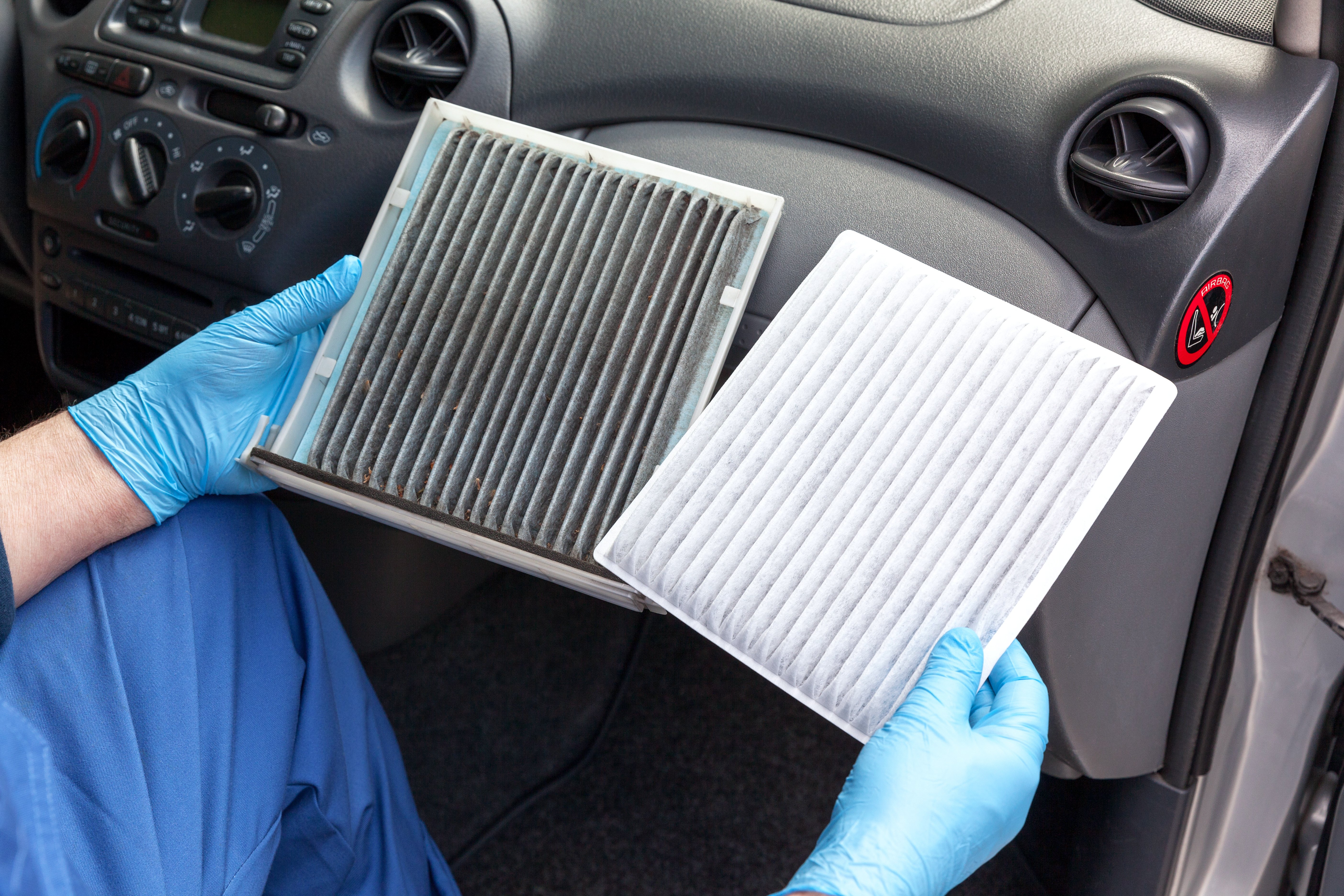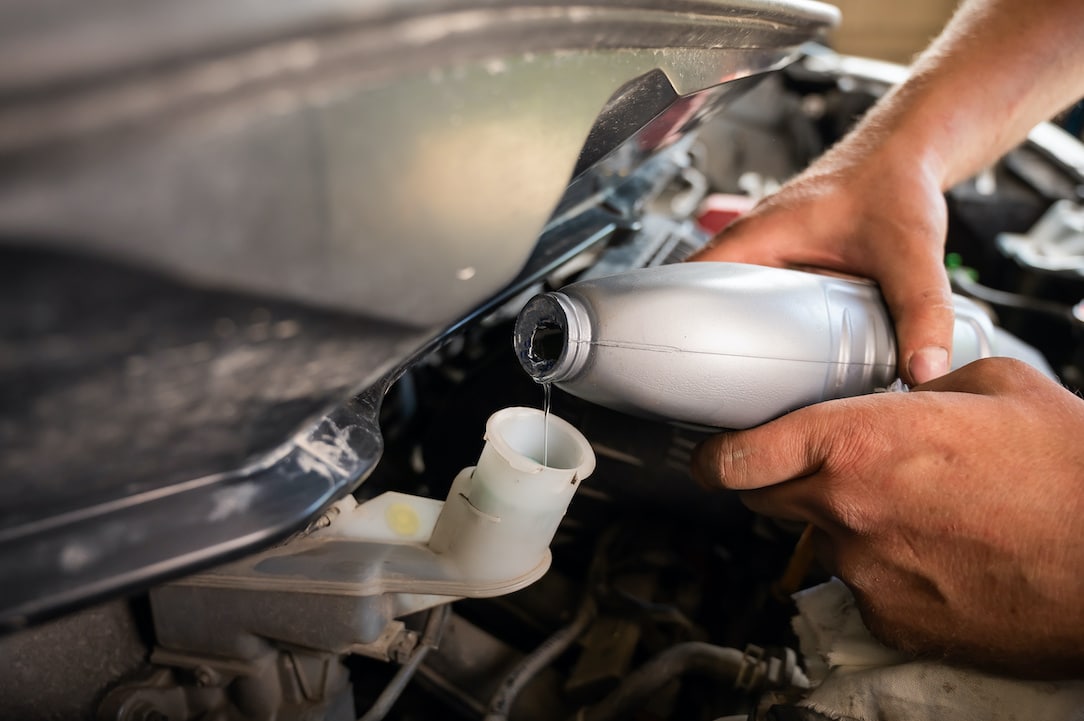How to Put Transmission Fluid in a Car: A Complete Overview
Table of Contents
Adding transmission fluid requires locating the transmission fluid dipstick, checking the fluid level while the engine is running at operating temperature, and carefully adding the correct type of fluid through the dipstick tube if needed. The process takes about 15 minutes and helps maintain your transmission's smooth operation.
Your car's transmission system is a complex mechanism that relies on proper transmission fluid levels to function correctly. Think of transmission fluid as the lifeblood of your transmission, it lubricates moving parts, helps transfer power from the engine to the wheels, and keeps the entire system cool during operation. When fluid levels run low, you might notice rough shifting, unusual noises, or delayed vehicle response. Regular checks and proper fluid levels can prevent transmission failure and costly repairs, which often cost thousands of dollars.
Finding and Checking Your Transmission Fluid
By learning to check and add transmission fluid yourself, you'll save money on maintenance costs and catch potential issues before they become major problems.
Safety Steps Before Checking
- Park your vehicle on flat, level ground
- Let your engine run for 15 minutes to reach operating temperature
- Put your car in park and engage the parking brake
- Wear protective gloves and have clean rags ready
- Turn off the engine before checking (unless manual states otherwise)
Where to Find the Dipstick
Different vehicles have different dipstick locations:
- Front-wheel drive: Look on the transaxle
- Rear-wheel drive: Check behind the engine on the transmission
- Look for a red or orange handle to distinguish it from the engine oil dipstick (usually yellow)
How to Check the Fluid Level
- Locate and carefully pull out the transmission fluid dipstick from its tube.
- Take a clean, lint-free cloth and thoroughly wipe off all fluid from the dipstick.
- Reinsert the dipstick completely back into the dipstick tube.
- Pull the dipstick out again to get an accurate reading of the fluid level.
- Examine the fluid level on the dipstick and compare it to the "Full" and "Add" markings to determine if more fluid is needed.
Checking Fluid Condition
When it comes to transmission fluid, there are several key characteristics that indicate it's in good condition. Quality trans fluid should appear bright red in color, completely clear without any visible particles or debris floating in it, and have no burnt smell whatsoever. However, there are several warning signs you should watch out for that indicate your transmission fluid needs immediate attention. If you notice the fluid has turned brown or dark in color, contains visible metal particles, gives off a burnt odor, or if you find low fluid levels while the fluid itself appears clean (which could indicate a leak), these are all serious red flags that require professional inspection and service.
Take photos of the fluid's condition during each check, this helps track changes over time. If you spot any warning signs, addressing them quickly can prevent costly repairs.

Choosing the Right Transmission Fluid
Transmission fluid comes in several specific types, and using the correct fluid prevents costly repairs to your transmission system. The three main categories are automatic transmission fluid (ATF), manual transmission fluid, and continuously variable transmission (CVT) fluid.
Automatic Transmission Fluid (ATF) Specifications
Automatic transmission fluid is the most common type, with several variations available. Newer cars typically use specialized formulations like Dexron VI, Mercon V, or manufacturer-specific fluids. These modern fluids contain additives that help with operating temperature and smooth shifting. Older vehicles often use Dexron III or Mercon, but always check your specific vehicle requirements.
Manual Transmission Fluid Details
Manual transmission fluid tends to be thicker than engine oil and sometimes shares properties with gear oil. This thicker consistency helps protect manual transmission components under extreme temperatures. Some manual transmissions actually use motor oil or gear oil rather than specialized trans fluid.
CVT Fluid Specifics
CVT fluid is specifically designed for continuously variable transmissions. Never substitute regular ATF for CVT fluid, as this can cause transmission failure. CVT fluid has unique friction qualities that allow the transmission's belt or chain system to work properly.
Finding Your Vehicle's Correct Fluid
To find the right fluid for your car:
- Check your owner's manual in the specifications section
- Look for the transmission fluid type label under your hood
- Reference your vehicle identification number (VIN) when purchasing fluid
Purchasing and Storage Guidelines
When buying transmission fluid, stick to well-known brands that meet your manufacturer's specifications. Avoid generic or unknown brands, and never mix different types of fluid. Store unopened containers in a cool, dry place, and keep partially used containers tightly sealed to prevent contamination.
Quality and Shelf Life
Most transmission fluids have a shelf life of about 5 years when stored properly. Always check the fluid's color before use, it should match the manufacturer's description of new fluid, usually red or green depending on the type. If you notice any separation, cloudiness, or odd smells, don't use the fluid.
.png?width=1000&height=600&name=adding%20transmission%20fluid%20(2).png)
Adding Transmission Fluid Step-by-Step
The proper tools and procedure make adding transmission fluid straightforward, which saves you time and money
Required Tools
- Clean funnel (specifically for transmission fluid)
- Correct transmission fluid for your vehicle
- Clean shop rags
- Protective gloves
- Owner's manual
- Flashlight
Before You Begin
Park your car on level ground and let it run for about 15 minutes to warm up the transmission fluid. This helps you get an accurate reading. Put the car in park, engage the parking brake, and keep the engine running during the process.
Step-by-Step Process
- Find the transmission dipstick, it typically has a red or orange handle and is shorter than the oil dipstick
- Remove the dipstick and wipe it clean with a rag
- Reinsert the dipstick fully and remove it again to check the current fluid level
- Place your funnel in the dipstick tube
- Add fluid in small amounts, about 1/2 quart at a time
- Check the level after each addition by wiping, reinserting, and removing the dipstick
- Stop when the fluid reaches the "Full" or "Max" line on the dipstick
Mistakes to Watch For & Finishing Up
Don't overfill the transmission, this can cause transmission failure and serious damage. Never add fluid while the engine is cold, as this will give an incorrect reading. Avoid using the wrong type of transmission fluid, which can harm your transmission system.
Remove the funnel and wipe any spills immediately. Double-check that the dipstick is fully seated. Keep your car running for a few more minutes, then check the level one final time. Clean your tools and store them properly for next time.

Use Tinker DIY For Professional Help
While adding transmission fluid is a straightforward DIY task that many car owners can handle, there are situations where professional guidance makes sense. If you notice potential issues even after checking fluid level, spot metal shavings in your old fluid, or can't locate the transmission fluid dipstick or filler plug, getting an expert opinion can prevent costly repairs.
For peace of mind on your transmission maintenance or any other car repair, Tinker DIY connects you directly with professional mechanics through live video chat. Our experienced mechanics can guide you through the correct procedure, help you identify the proper transmission fluid type, and make sure you're following the right steps for your specific vehicle.
Ready to tackle your car repairs with confidence? Download the Tinker DIY app today and get instant access to one-on-one video consultations with certified mechanics. Whether you're a first-time DIYer or an experienced home mechanic, having a pro in your pocket means you'll never have to face an auto repair challenge alone.


